Conscious Leadership is about taking 100% responsibility for our thoughts, feelings, actions, and results—not just when it’s easy, but especially when it’s hard.
Above the line, we approach life with openness, curiosity, and a willingness to learn. Below the line, we defend, blame, or try to be the hero.
The shift? Moving from blame (of others or self) into learning. If you missed the first part of the leadership series on Leading Above or Below the Line, check out
this blog for more context.
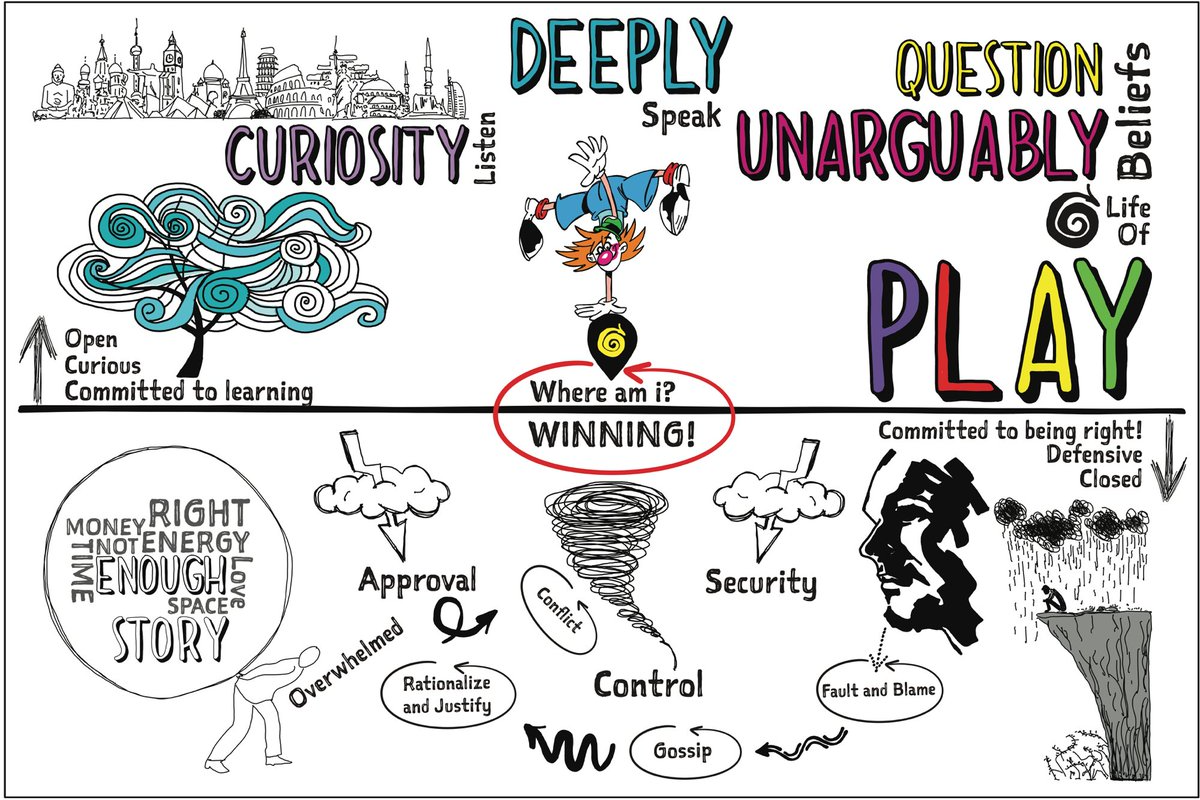
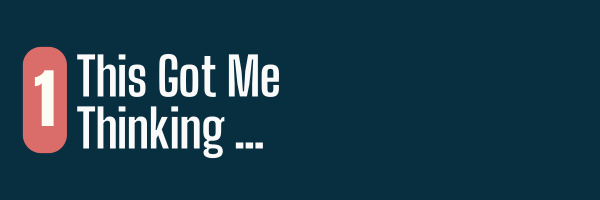
- What if the world isn’t happening to us, but for us?
Implementing new processes:
"They're always difficult and resistant to change → Did we engage the right people at the right time?"
This is something I think about a lot. Especially when things get tough, my mindfulness alarm goes off and gets me thinking about a few things, one of which, is shifting to learning mode.
These questions help with (1) locating, am I above or below the line, (2) what outcome am I attached to, (3) can I accept where I am, (4) and am I willing to shift. As a human, we always go below the line, but
how quickly we can shift is where progress can be made.
If we can see life as a
personalized curriculum, it can change everything. We can meet challenges with openness, and maybe even one day gratitude, instead of resistance or dipping into victim mode. The more we practice anything the better we get at it.
Another great question we can ask ourselves that enables us to take on radical responsibility is:
"How am I creating this experience, and what can I learn from it?”
Examples in practice:
Implementing new processes: - "They're always difficult and resistant to change → Did we engage the right people at the right time?"
Delegation friction: - “They’re defensive” → “How am I co-creating this? Did I set context and expectations clearly?”
Revenue dip: - “Our marketing and operations is falling through” → “Given the constraints, is there an experiment we should run right now?”
Patient upset:- “They’re always like this, impossible” → “What expectation gap did we miss? Did I really hear their story?"
Watch this quick video on taking 100% responsibility. The practice of taking 100% ownership for your thoughts, feelings, actions, and results—without blaming yourself or others—while focusing on what you can learn and how you can shift.
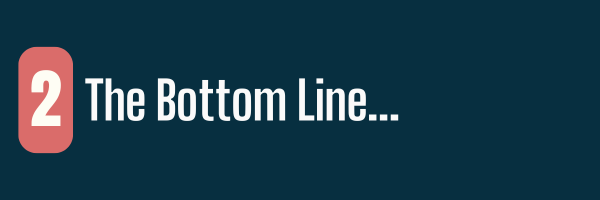
Radical responsibility means: - Owning impact, not just intention.
- Choosing response over reactivity.
- Working in the circles of Control (my words, boundaries), Influence (relationships, systems I can shape), and Concern (my boss, others’ feelings).
It does not mean:- Self-blame or shame.
- Taking responsibility for other people’s emotions.
- Pretending constraints don’t exist.
When we avoid radical responsibility, at work or in life, we get stuck in blame, defensiveness, and focusing on what’s outside our control. In the workplace, this can quietly erode trust, lower morale, and keep teams circling the same problems. In our personal lives, it fuels stress, strains relationships, and robs us of the growth that comes from meeting challenges with curiosity and ownership.
Reflection: Where in your work or personal life have you been focused on what others should change—and what shift could you make if you took full ownership instead?
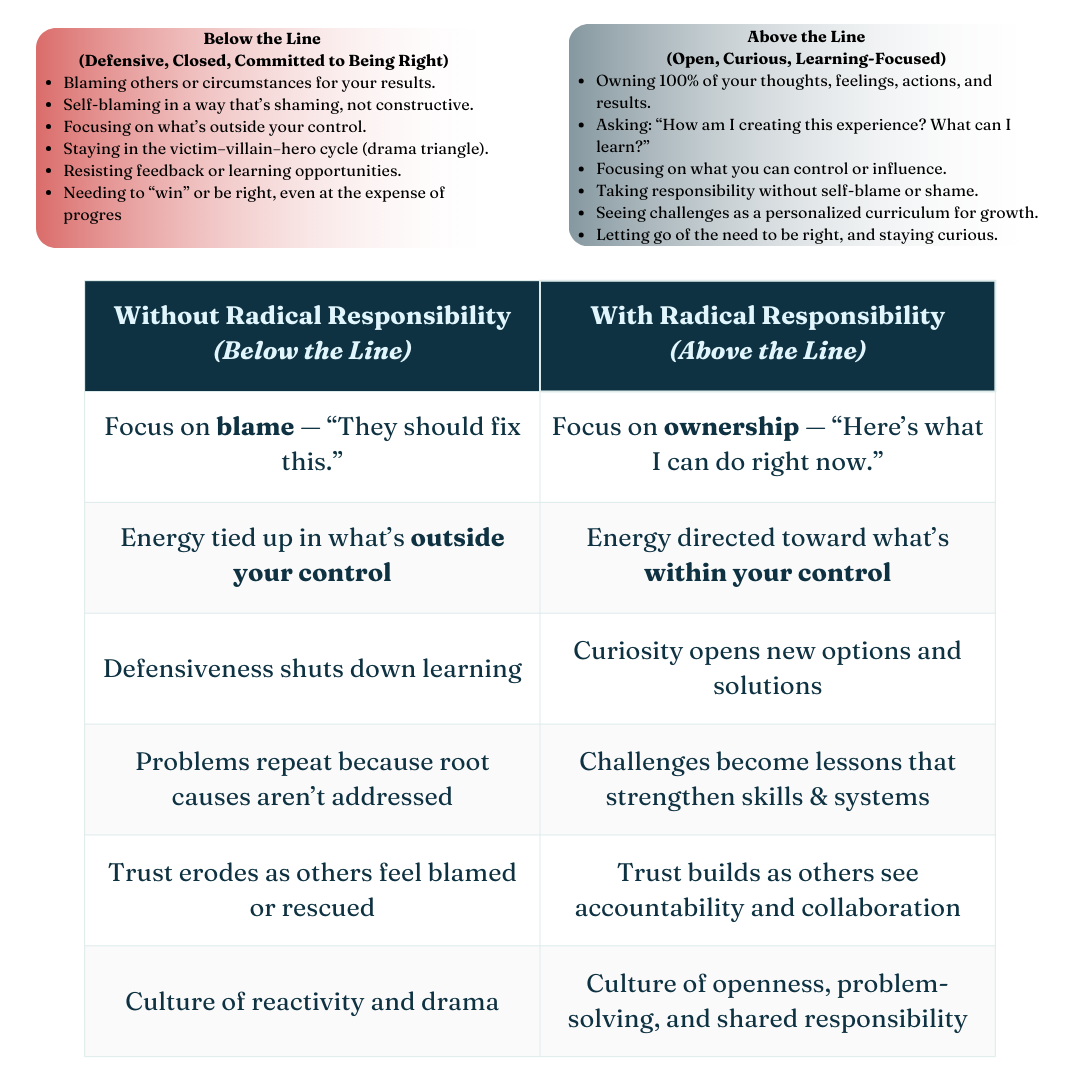
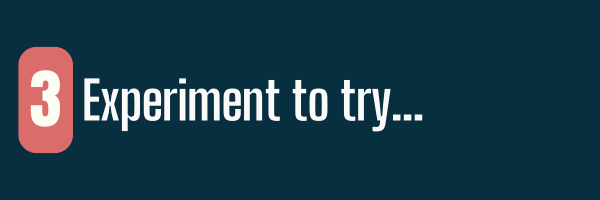
For the next week:
Daily check-in:
- Locate: “Above or below the line right now?” If below, breathe, label the stance, and ask,
- “What’s one shift I’m willing to make?”
Hero-detox: Notice each time you jump in to rescue.
- Replace with: “Would you like suggestions or just a sounding board?”
Meeting opener:
- “Above or below the line?” +
- “One shift I’m willing to make this meeting.”
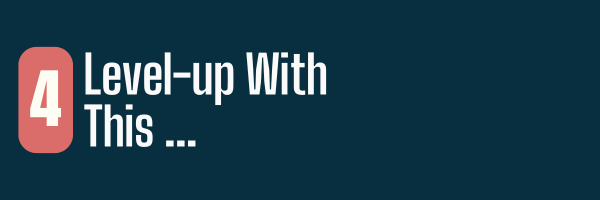
Language shapes how we think—and how others experience us. When we’re below the line, our words often slip into blame, defensiveness, or disempowerment without us noticing. By making small, intentional changes in phrasing, we can shift ourselves back above the line and model radical responsibility in real time.
These
language swaps replace blame or resignation with ownership and clarity:
- “You made me…” → “I felt ___ when ___ happened, and I’d like ___ next time.”
- “They never…” → “I haven’t been explicit about expectations.”
- “I have to…” → “I’m choosing to ___ because ___ matters.”
If–then plans help us pre-decide how to respond when we feel ourselves sliding into reactivity:
If I feel defensive in feedback, then I’ll say: “Thanks—give me 24 hours to consider and I’ll circle back.”
If a task stalls twice, then I’ll schedule a 10-minute alignment call.
Rewatch the
Commitment 1 video and pay attention to the parts that make you squirm—those moments are usually your best clues about where these swaps and plans could make the biggest difference for you.
AI Scribe Stuff:I keep mentioning this for two reasons: 1. I get a lot of questions about it;
2. There is an outsized and almost immediate ROI once you get started, and finally;
3. Did I mention I get a lot of questions on it? Keep them coming :)
If your a clinician this is something you got to try for at least 1 month.If you’re interested in adding the AI scribe to your practice, you can take this
course, read this
blog, read this
PABC article, or jump on
Jane's site to get in the know.
I have played a role in the development process of this feature and seen how good this thing has got in such a short period of time. It monthly cost is about the same as two lattes a month, but if you value your time, you know you're saving far more than that.
If you’re not on Jane yet, use my grace period code
AMP1MO to get started, then you can explore the scribe and see how it fits into your practice.
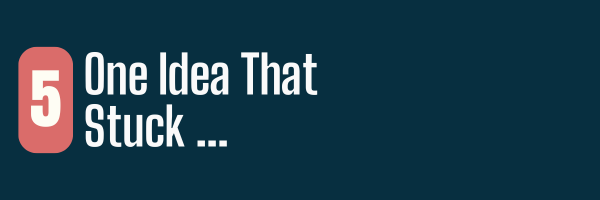
“Conscious leaders locate the cause of problems in themselves and take responsibility for the circumstances of their lives.”Responsibility is not fault, it’s empowerment. Fault looks backward for blame; responsibility looks forward for action. It puts you back in the driver’s seat,
models ownership for others, and turns problems into
opportunities for learning and stronger systems.
Mantras to carry:- “I can’t control others; I can own my stance.”
- “Clarity before effort.”
- “Small shifts, repeated, change systems.”
- “Every challenge is feedback.”
What I commit to this week:
- Greeting challenge with curiosity.
- Experiment: Catch myself thinking about what outcome I might be attached to.
- Appreciation: Connecting with more of the rehab community.







